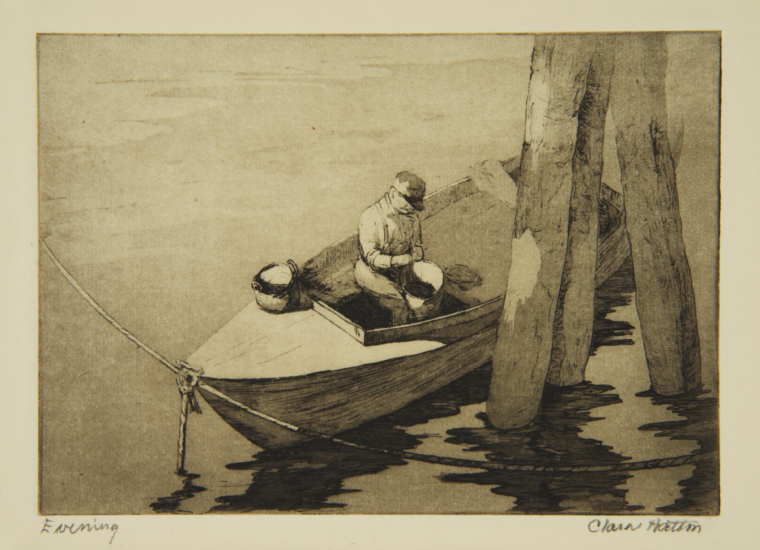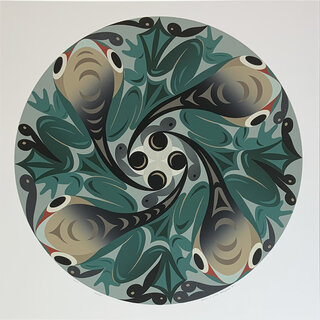
In the late 1920s, Hatton studied aquatint and etching at the Rockport Art Association Summer School of Art in Rockport, Massachusetts, with Albert Thayer, a New England painter and printmaker. Among Hatton’s earliest intaglio works, Evening depicts a New England fishing scene and was created under Thayer’s tutelage. The aquatint technique is notable for its ability to produce a full range of tone by controlling how long a particular area of the plate is etched in the acid bath--the longer the exposure, the darker the area will print. The numerals appearing on the annotated study for Evening indicate the number of minutes the corresponding areas needed to be submerged in the acid in order to achieve the desired tone. Once etched for the prescribed duration, an area is covered with a varnish that renders it impervious to the acid during subsequent submersions.




